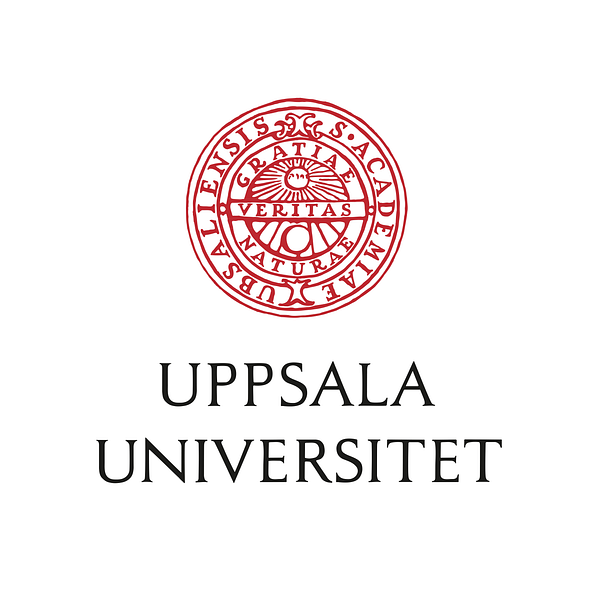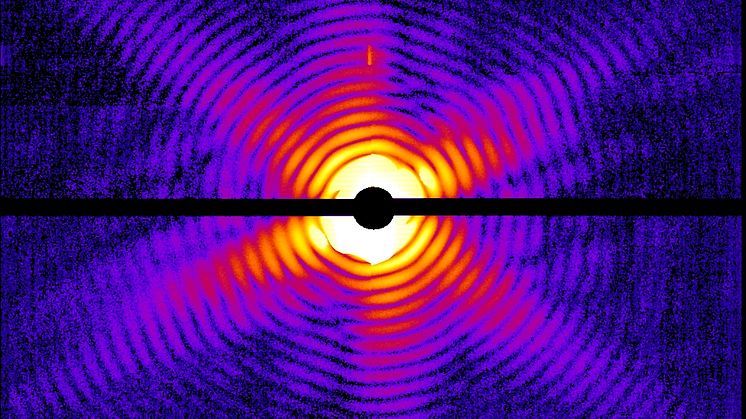Pressmeddelande -
Extreme X-ray pulses create unique image of intact virus
An international research team has managed to capture an image of an intact virus and a membrane structure from a photosynthetic bacterium with the aid of extremely intensive and ultra-short X-ray pulses from the world’s first free electron laser. This new advance in structural biology is being published today in two articles in the journal Nature.
The findings pave the way for studies of biological structures at the molecular level, including viruses, individual cells, cell organelles, and living bacteria. The technology enhances the possibilities of imaging individual biological molecules that are too small to study even with the most powerful microscopes.
- Biologists have long dreamed of being able to capture the image of viruses, single-cell organisms, and bacteria without having to section, freeze, or stain them with metals, as is necessary in electron microscopy. Our studies show that it is really possible to create images with the aid of extremely intensive and ultra-short x-ray pulses that would otherwise destroy everything in their path, says Professor Janos Hajdu from the Division of Molecular Biophysics, Uppsala University.
Together with his colleague Henry Chapman, he has co-directed the international research team, which also includes Inger Andersson’s team from the Swedish University of Agricultural Sciences, SLU. The entire international group is currently at Stanford for new experiments with the advanced free electron laser.
X-ray diffraction has been an irreplaceable tool in identifying biological structures, but this technique depends on the availability of cristalline samples of sufficient size. Many particles are therefore packed in crystals. For single particles the x-ray dose needs to be increased so much that the particle is destroyed. This problem is especially acute for biologiscal materials. Ten years ago it was suggested that extremely short pulses from a so-called free electron laser would be able to create an image before the particle had time to be damaged. It is this method (read more about the technology below) that is now being tested on biological material.
In the first study, the method was tested on Mimivirus, the world’s largest known virus, discovered as recently as 1992. It is larger than some single-cell organisms and the only virus that can be infected by a virus of its own. Its size and special surface structure entails that it cannot be studied using conventional imaging methods such as electron microscopy or X-ray crystallography.
In the other study the team shows that X-ray pulses can also be used to study the structure of vitally important membrane proteins – in this case a protein complex that captures sunlight and converts it to energy in photosynthesizing organisms, here a photosynthetic bacterium. Membrane proteins are essential to life processes, not only as energy converters but also as the cell’s transporters and receptors for drugs – but they are incredibly hard to study using conventional methods. The new technology means that huge “blank patches” in structural biology will now be accessible for study at atomic level for the first time.
About the technology: The world’s first hard X-ray free electron laser – the Linac Coherent Light Source (LCLS), at SLAC National Accelerator Center – has a light intensity that surpasses conventional synchrotrons by a billion times, so intensive that it can cut through steel. A single pulse that is focused on a micrometer-size point contains as much energy as all sunlight hitting the earth focused to a square millimeter. The light pulses are extremely short (50-70 femtoseconds, 1 fs = 10-15 sec), which means that can replicate the image of a micrometer-size virus, before it is heated up to 100,000 degree centigrade and is destroyed. LCLS came into use in October 2009, and the studies in question were performed in December that year.
The Laboratory of Molecular Biophysics is a Centre of Excellence of the Swedish Research Council. The laobratory promotes research and discoveries at the frontiers of photon science by exploring and exploiting photon-material internations on extremely short time scales, at extremely high photon frequencies and in extremely strong photon fields. This laboratory produced the scientific case in biomolecular imaging for building X-ray free-electron lasers, including LCLS at Stanford, the European XFEL in Hamburg and other facilties currently under construction.
References:
Hajdu et al. Single mimivirus particles intercepted and imaged with an X-ray laser. Nature, doi:10.1038/nature09748
Chapman et al. Femtosecond X-ray protein nanocrystallography. Nature, doi:10.1038/nature09750
For more information, please contact Janos Hajdu (currently at Stanford), mobile: +46 (0)70-425 01 94, janos.hajdu@icm.uu.se or Inger Andersson (also currently at Stanford), mobile: +46 (0)70-520 81 01, inger.andersson@molbio.slu.se
Regioner
Uppsala University -- quality, knowledge, and creativity since 1477
World-class research and outstanding education of global benefit to society, business, and culture.
Uppsala University is one of northern Europe's highest ranked academic institutions. www.uu.se

